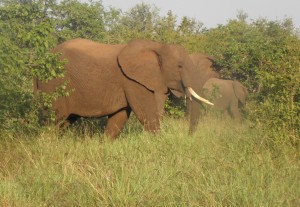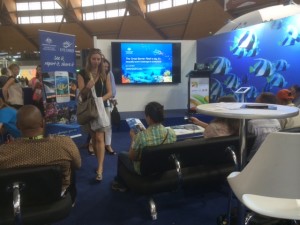Update on Wildlife Tourism Conference September 2015
A couple of weeks ago I spent a very encouraging few days in Melbourne and Geelong with Roger Smith and Caz Bartholomew of Echidna Walkabout (I’m chair of Wildlife Tourism Australia, and Roger is vice chair), helping to prepare for Australia’s third wildlife tourism conference at the end of September this year.
Exploring the venues
First we explored the possibilities we had narrowed down to for.
All were lovely venues, but our final decision had to be made on the numbers they were able to accommodate at the conference. We’re hoping for at least 200, so had to abandon ideas of holding it at the Conference Centre in the Botanic Gardens or the Vines Road Community Centre.
The Botanic Gardens, with its sweeping parklands, birdlife, fruitbat colony and views of the sea, is within easy walking distance of the venue we finally chose, so we may still have a social function there, and it is also one of our recommended accommodation choices for those who prefer to be surrounded by trees instead of city streets at night.
Vines Road Community Centre was our original choice, but once again it won’t take the numbers we’re now predicting.
 The Mercure Hotel in Geelong can take the numbers,and will be having a major facelift soon, to be finished before the conference, and the staff are happy to provide all our needs . It’s just a few minutes walk from the gardens or the beach. They’ve offered us a generous discount on their rooms, many of which can take three adults in separate beds (thus making the rooms affordable for students) but are also totally okay about some delegates choosing to stay elsewhere.
The Mercure Hotel in Geelong can take the numbers,and will be having a major facelift soon, to be finished before the conference, and the staff are happy to provide all our needs . It’s just a few minutes walk from the gardens or the beach. They’ve offered us a generous discount on their rooms, many of which can take three adults in separate beds (thus making the rooms affordable for students) but are also totally okay about some delegates choosing to stay elsewhere.
The really exciting part though is the quality of speakers we already know about (and we should soon be hearing from plenty more), spread across several continents and presenting a range of useful topics relating to how wildlife tourism can contribute to biodiversity conservation and local communities.
In the afternoons we’ll do as we have so successfully done in the WTA workshops over the last few years: divided into small groups for interactive roundtable discussions, joining up again in plenary discussions afterwards, and ultimately collating and uploading the notes from these to the WTA website as well as taking action (new policy guidelines on the website, letters to politicians etc.)
For details, visit:
http://www.wildlifetourism.org.au/wildlife-tourism-conference-2015/








